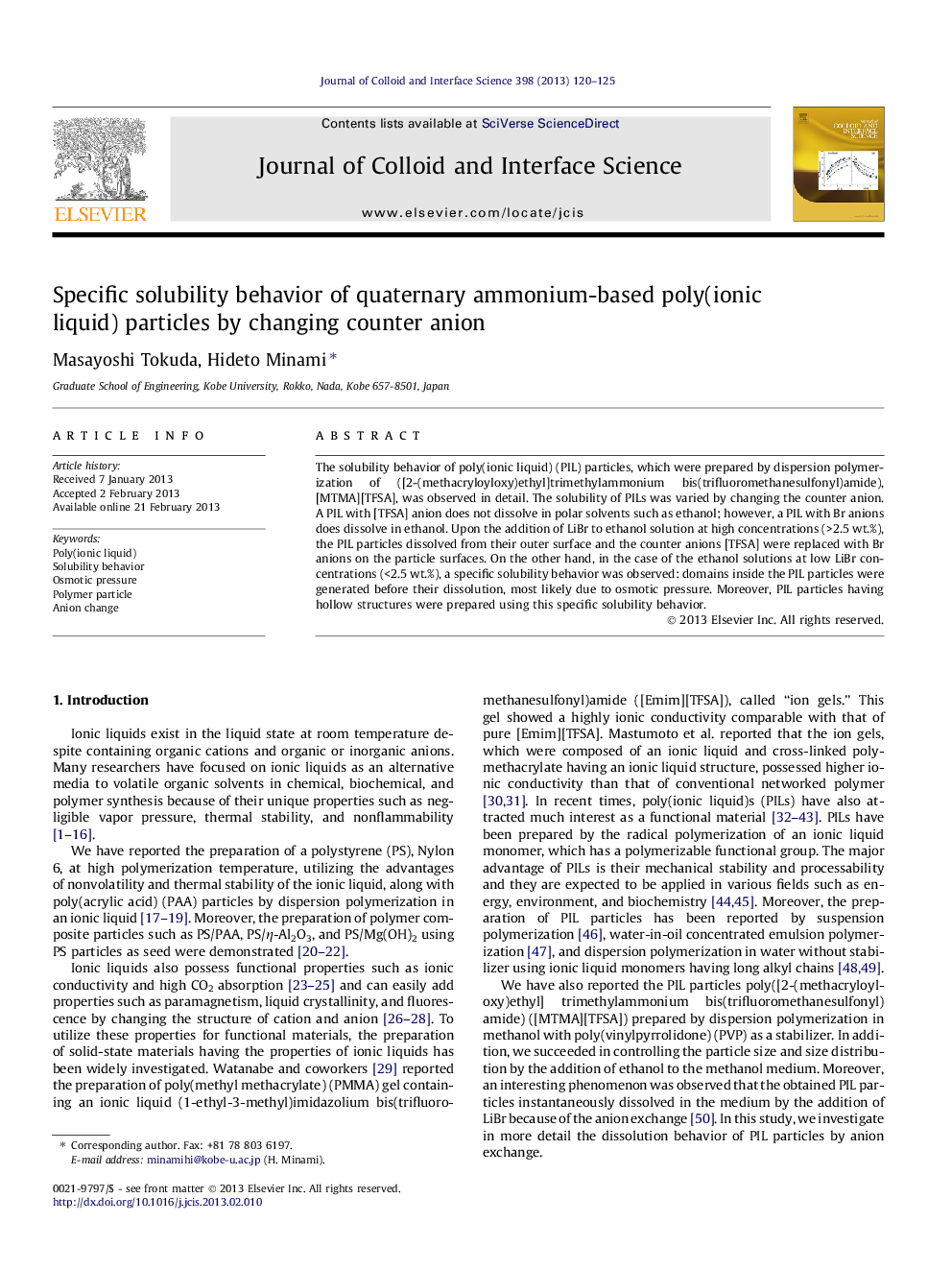| Article ID | Journal | Published Year | Pages | File Type |
|---|---|---|---|---|
| 607875 | Journal of Colloid and Interface Science | 2013 | 6 Pages |
The solubility behavior of poly(ionic liquid) (PIL) particles, which were prepared by dispersion polymerization of ([2-(methacryloyloxy)ethyl]trimethylammonium bis(trifluoromethanesulfonyl)amide), [MTMA][TFSA], was observed in detail. The solubility of PILs was varied by changing the counter anion. A PIL with [TFSA] anion does not dissolve in polar solvents such as ethanol; however, a PIL with Br anions does dissolve in ethanol. Upon the addition of LiBr to ethanol solution at high concentrations (>2.5 wt.%), the PIL particles dissolved from their outer surface and the counter anions [TFSA] were replaced with Br anions on the particle surfaces. On the other hand, in the case of the ethanol solutions at low LiBr concentrations (<2.5 wt.%), a specific solubility behavior was observed: domains inside the PIL particles were generated before their dissolution, most likely due to osmotic pressure. Moreover, PIL particles having hollow structures were prepared using this specific solubility behavior.
Graphical abstractFigure optionsDownload full-size imageDownload high-quality image (57 K)Download as PowerPoint slideHighlights► The solubility behavior of poly(ionic liquid) (PIL) particles was observed by changing the counter anion. ► At low salt concentrations (<2.5 wt.%), domains inside the PIL particles were generated before their dissolution. ► This solubility behavior was caused by differences in osmotic pressure between the PIL particles and salt solutions. ► PIL particles having hollow structure were prepared utilizing osmotic phenomena.
